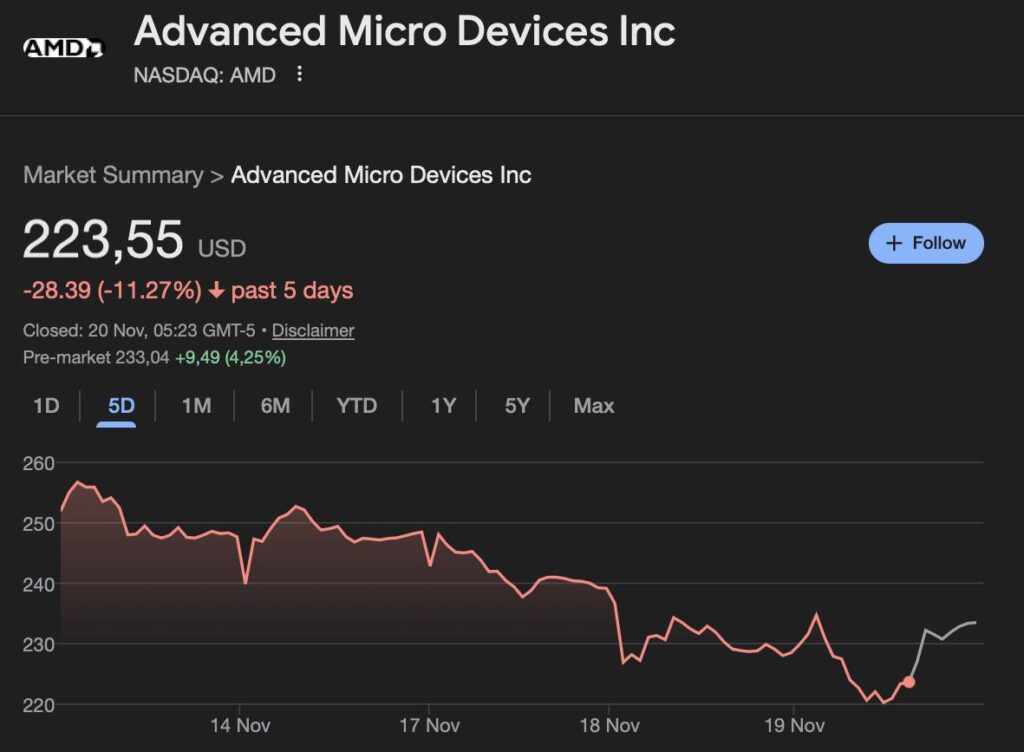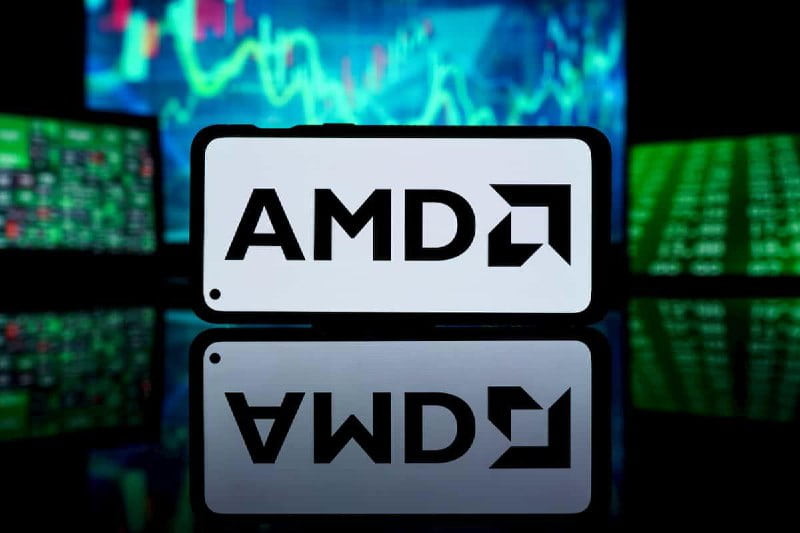Advanced Micro Devices (NASDAQ: AMD) is seeing renewed upward momentum in pre-market trading despite a sharp decline over the past week, as investors reassess the semiconductor sector following Nvidia’s latest earnings report.
AMD closed Wednesday at $223.55 per share, marking an 11.27% drop over the past five trading days amid broader weakness in chipmakers. However, shares rebounded to $232.80 in pre-market hours on Thursday, gaining 4.14% and suggesting growing optimism among traders that the recent pullback may have been overdone.

The shift in sentiment was largely driven by Nvidia’s (NASDAQ: NVDA) better-than-feared third-quarter results, which helped ease concerns over a potential slowdown in AI-related spending. In a note published after the earnings release, Goldman Sachs reiterated its Buy rating on Nvidia with a $240 price target, explaining that hyperscaler capital expenditure cuts had already lowered investor expectations ahead of the print.
The bank highlighted that Nvidia’s stronger data center guidance for Q4 signalled that AI investment remains robust, describing this as a positive indication not only for Nvidia but also for other players in the sector, including AMD and Broadcom. Nvidia’s earnings report effectively reset market expectations and reignited interest in companies positioned to benefit from the ongoing demand for AI computing infrastructure.
Wall Street’s AMD stock forecast
Recent commentary from institutional analysts points to AMD gaining incremental market share as data centre operators seek broader hardware diversification strategies, particularly as AI workloads become more energy-intensive and require alternative compute solutions.
Despite recent short-term pressure, sentiment toward AMD remains constructive. Analysts at Morgan Stanley described the stock as “undervalued relative to AI peers” in a note dated 18 November, assigning a $260 price target, while Jefferies projected upside into the 2026 upgrade cycle with a target of $270.
The median consensus stands at approximately $258, implying double-digit upside from current pre-market levels. While pricing pressure in the PC market and competitive intensity from Nvidia remain concerns, the broader AI infrastructure build-out appears to be offsetting these headwinds for now.
Investor confidence today is primarily being driven by reassurances that AI spending remains on track, rather than any major shift in AMD-specific fundamentals. While the stock’s recent weakness captured short-term worry, today’s rebound reflects a reassessment of the sector rather than a direct reaction to AMD’s own corporate developments. The market’s response to Nvidia’s results appears to have provided much-needed clarity on AI investment appetite.
As long as data centre operators continue to prioritise GPU and CPU hardware upgrades into 2026, AMD is likely to remain a key strategic beneficiary.









